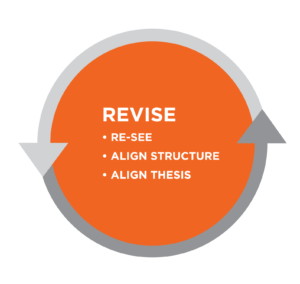7.2: Introduction to Revising
- Page ID
- 58341
What you’ll learn to do: analyze revision activities
In their seminal book, The Elements of Style[1], William Strunk, Jr. and E.B. White acknowledge the need for revision in the writing process: “Few writers are so expert that they can produce what they are after on the first try. Quite often you will discover, on examining the completed work, that there are serious flaws in the arrangement of the material, calling for transpositions… do not be afraid to experiment with your text.”
In this section, we’ll learn about techniques for revision that will enable you to refine and improve your paper. Think of writing like creating a work of art—to produce a polished product, you’d create the initial piece and then revisit it to make adjustments and improvements, probably multiple times. Similarly, you are missing out on an important opportunity for improvement if you don’t take the time to revise your writing.
- Strunk, William; E. B. White (1972) [1959]. The Elements of Style (2nd ed.). Plain Label Books. pp. 55–56. ISBN 978-1-60303-050-2. ↵
Contributors and Attributions
- Outcome: Revising. Provided by: Lumen Learning. License: CC BY: Attribution
- Image of revise. Authored by: Kim Louie for Lumen Learning. License: CC BY: Attribution
- Revision (writing). Provided by: Wikipedia. Located at: https://en.Wikipedia.org/wiki/Revision_(writing). License: CC BY-SA: Attribution-ShareAlike


